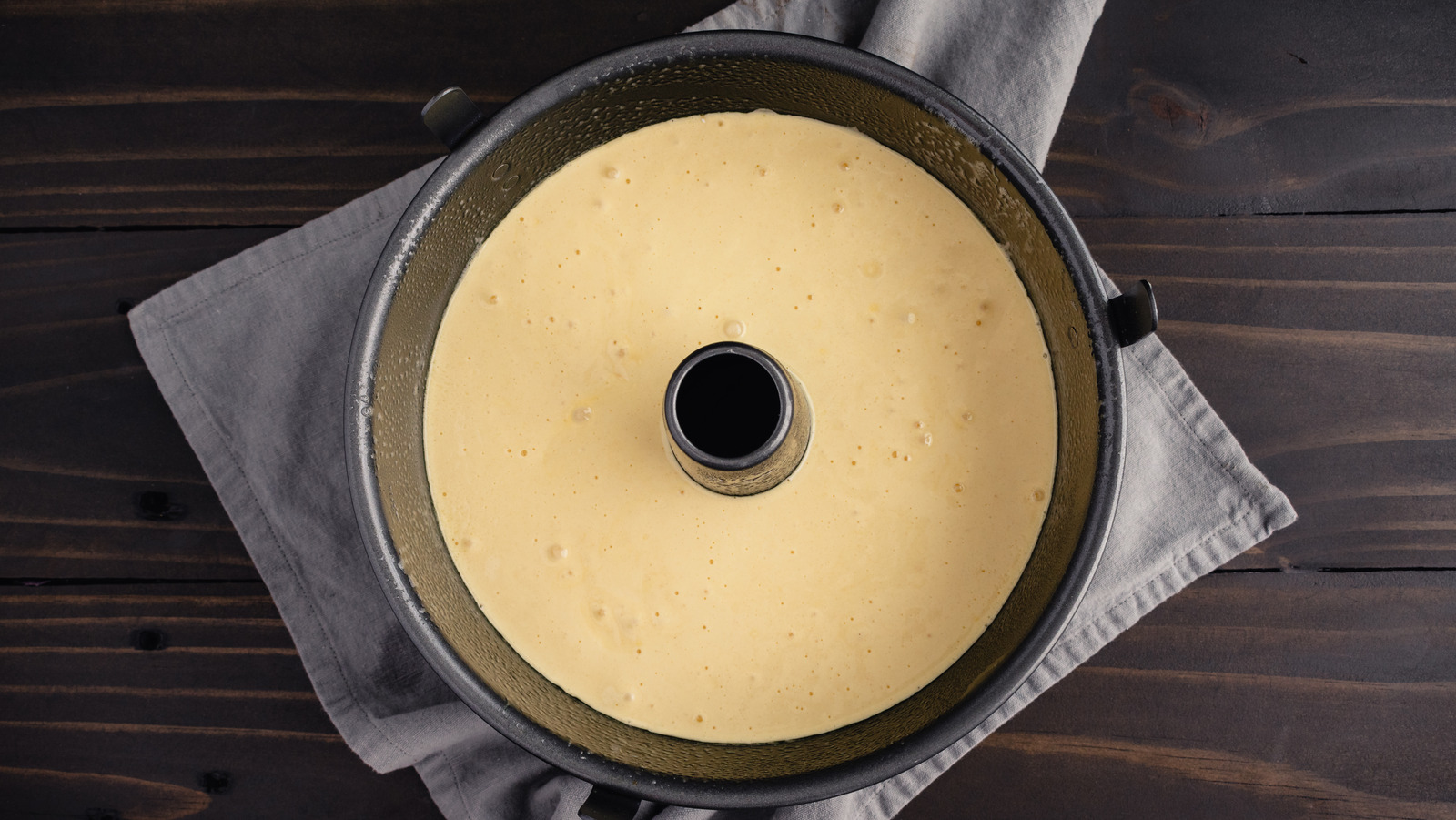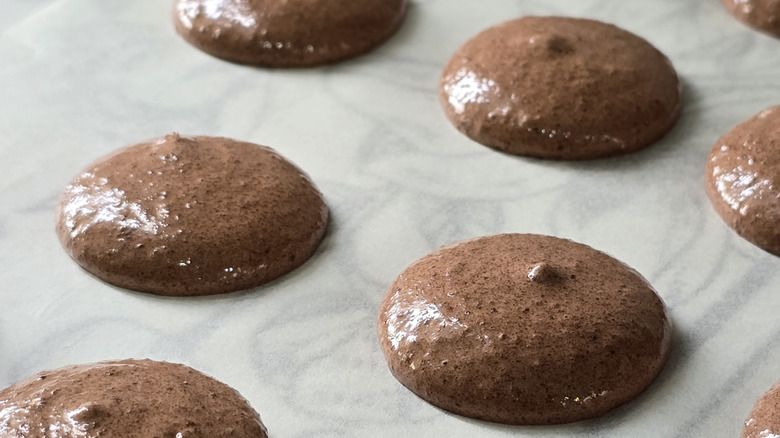When you first start baking in your college dorm, making your microwave mug cakes look less weird on top might be considered a win. But if you’re a little older, you’ve graduated to using the oven to concoct your sweet treats, and you’re looking for some tips and tricks to elevate your baking skills, here’s one to start with: Tap your pan to get rid of air bubbles from your batter before putting it in the oven.
Although there are some baked goods, like bread or sponge cake, where air bubbles are a necessary component of their structure, other recipes find bubbles cause textural issues or prevent a smooth, flat top from forming. These air bubbles are sometimes the result of over whisking, which incorporates too much air into the batter, and sometimes the result of excess carbon dioxide created by baking soda or baking powder in the rising process.
Sure, you want these small bubbles to help your cake rise and give it that airy springiness that results in a texturally satisfying finish. But uneven bubbles, or ones that are too big, can leave the tops of desserts looking messy, throwing off the balance of the baked good. And for specialized desserts, like delicate, decadent macarons, even small bubbles can ruin your chances of achieving a Parisian-approved bite. Tapping your pan on a hard countertop first can bring those air bubbles to the top of the batter, letting some of the trapped CO2 escape before it bakes and solidifying a hole inside your baked goods.
Extra tips for deflating your batter
This hack is pretty simple, but there are a few factors to keep in mind while you’re popping excess bubbles in your batter. First, don’t be afraid to be firm with your tapping. No, you don’t want the batter to spill over the edges, but you aren’t going to ruin it by hitting it hard — and if the air bubbles are all the way at the bottom of the pan, you’ll have to tap it solidly and maybe even a few times for them to rise to the top. An added bonus of doing this is that if you have a strangely shaped baking dish, like a detailed Bundt pan, tapping it will help the batter fall into all the corners to get the design to come across well.
Second, make sure the air bubbles have actually popped, and not just risen to the top. Sometimes after rising, they’ll sit on the top of the batter, requiring you to take a toothpick or a fork to pop them. After this, let the batter settle back into being flat. This level surface is especially important if you’re making a cake with a thin glaze, and you don’t want the top to look akin to the pockmarked surface of the moon. And there you have it. With this hack in your back pocket, you can impress some guests with your impeccably risen and smooth carrot cake with caramelized walnuts, or perhaps even a perfectly level, air-bubble-free dulce de leche cheesecake.






